Rava Vada, a beloved South Indian snack, invites you on a journey of flavours and textures. Originating from the heart of Southern India, this dish captures the essence of traditional recipes with a modern twist. The marriage of sieved Bombay Rava, earthy urad dal, and a medley of spices creates a crispy and tender snack. If you’re intrigued by the idea of a crunchy exterior giving way to a soft, flavorful core, Rava Vada is your culinary adventure.
About the Recipe
Why choose Rava Vada? This dish is more than a snack; it explores South Indian culinary artistry. The combination of ground dal, aromatic spices, and the unique texture of Bombay Rava creates a snack that’s not just a treat for your taste buds but also a feast for your senses. The delicate balance of flavours, from the warmth of black peppercorns to the earthiness of urad dal, showcases the rich tapestry of South Indian cuisine.
Why You Will Love This Recipe
What makes Rava Vada a kitchen favourite? Picture this: a light, crispy exterior that gives way to a soft and flavorful interior. Creating these vadas is not just cooking; it’s a sensory experience. The fragrance of curry leaves, the crunch as you bite into a golden-brown vada – it’s a culinary journey that promises to be both delightful and rewarding.
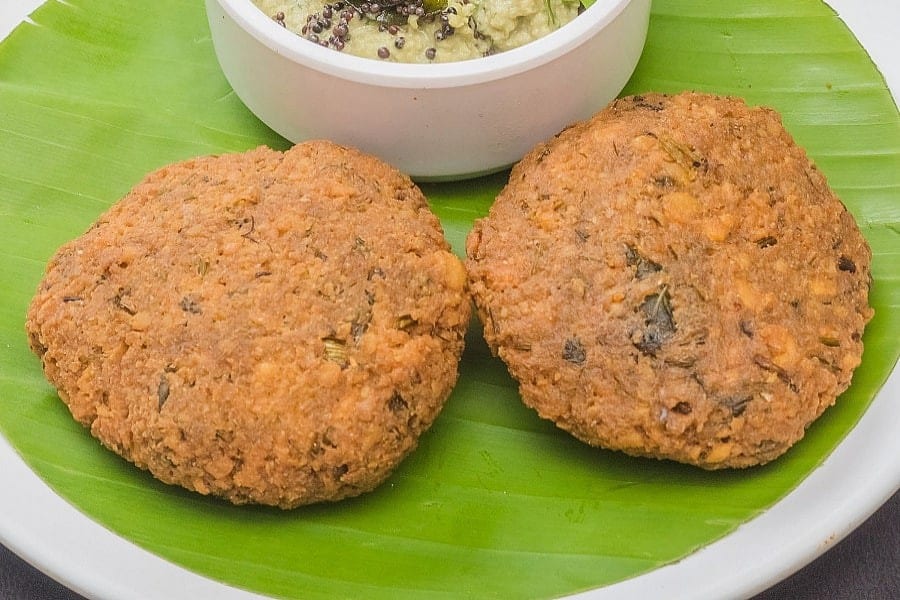
Rava Vada
Cooking Tips
To perfect your Rava Vada, ensure the dal is soaked just right – 15 to 30 minutes should do the trick. Grinding the dal to a golden powder adds a unique texture, while the coarse blend of peppercorns and cumin seeds introduces an aromatic punch. Don’t rush the soaking and resting times; these steps are the secrets to achieving the perfect balance of crispiness and tenderness.
Cultural Context
Hailing from South India, Rava Vada holds cultural significance in festive celebrations and everyday snacking. It reflects the region’s love for robust flavours and aromatic spices. The vadas, often enjoyed during special occasions, bring people together to savour the richness of South Indian culinary traditions.
Serving and Storing Suggestions
Serve your freshly fried Rava Vadas with coconut chutney or tangy sambar for an authentic experience. This recipe yields a generous batch, making it ideal for family gatherings or potluck parties. Store the flavours in an airtight container for up to two days to keep them intact. Reheat briefly in the oven for that just-fried crispiness.
Other Similar Recipes
If Rava Vada has captured your culinary curiosity, you might also enjoy exploring the world of South Indian snacks. Try making Masala Dosa or Medu Vada for diverse flavours and textures.
Nutrient Benefits
The combination of urad dal and Bombay Rava in Rava Vada offers protein and essential nutrients. Urad dal brings protein and fibre to the table, making this snack delicious and wholesome.

Rava Vada
Ingredients
- 2 cups Bombay Rava (sieved)
- 2 tbsp Urad Dal (1 tbsp soaked, 1 tbsp powdered)
- 1 1/2 tbsp Black Peppercorns
- 1 1/2 tsp Cumin Seeds
- 1 tbsp Ghee
- 1 tsp Salt
- 1 tsp Asafoetida Powder
- 2 tbsp Rice Flour
- 250 ml Oil
- Curry Leaves (a few)
Instructions
- Soak 1 tbsp dal in water for 15 to 30 minutes.
- Fry the remaining 1 tbsp dal until golden, then grind to a powder.
- Combine and grind peppercorns and cumin seeds into a coarse powder.
- Mix rava, urad dal, salt, asafoetida powder, cumin-peppercorn powder, and ghee in a bowl.
- Add the ground dal powder and enough water, mix well, and set aside for 45 minutes.
- Add curry leaves and mix again.
- Dip a small dough ball lightly in rice flour and roll it into small puris.
- Heat oil in a pan over medium flame.
- Fry the vadas until light golden brown and remove.
- Drain excess oil and serve.
Sign up for our newsletter
Frequently Asked Questions (FAQs):
Can I make Rava Vada ahead of time for a party?
Absolutely! Prepare the dough and fry the vadas before serving to ensure maximum crispiness.
What can I serve with Rava Vada?
Rava Vada pairs perfectly with coconut chutney or sambar, offering a delightful balance of flavours.
Can I bake Rava Vada instead of frying for a healthier option?
While traditional frying yields the best results, baking is a healthier alternative. Adjust temperature and timing accordingly.
Can I use regular rava instead of Bombay Rava?
Bombay Rava is recommended for its unique texture, but you can use regular rava with slight adjustments in water quantity.
Any tips for extra crunchiness?
Ensure the oil is adequately heated before frying, and roll the vadas thinly for that perfect, crispy texture.
Embrace the joy of crafting these delectable Rava Vadas, a symphony of textures and flavours that will undoubtedly become a favourite in your culinary repertoire.

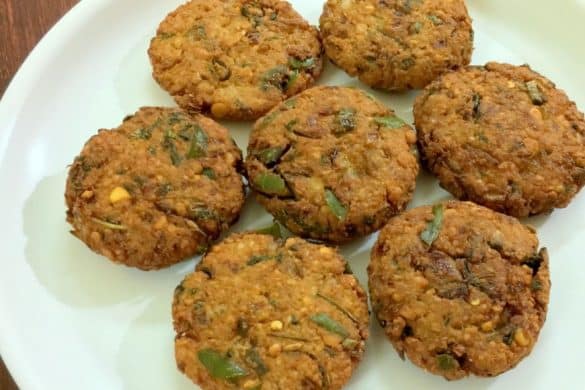
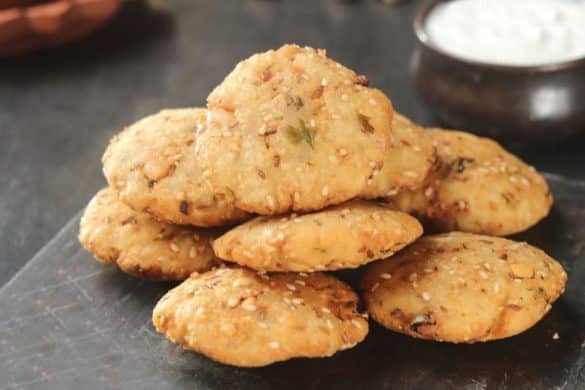
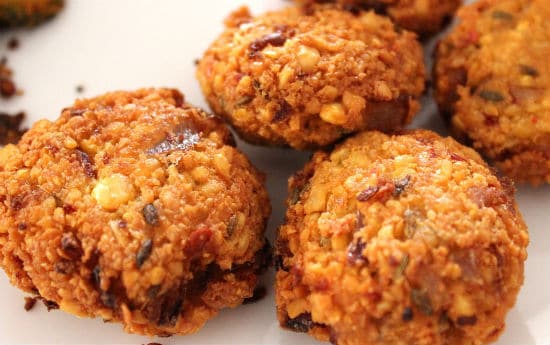
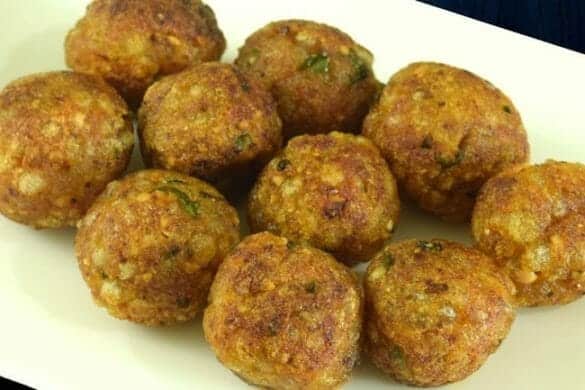
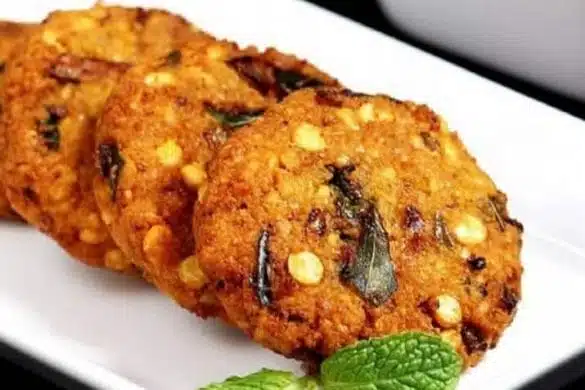
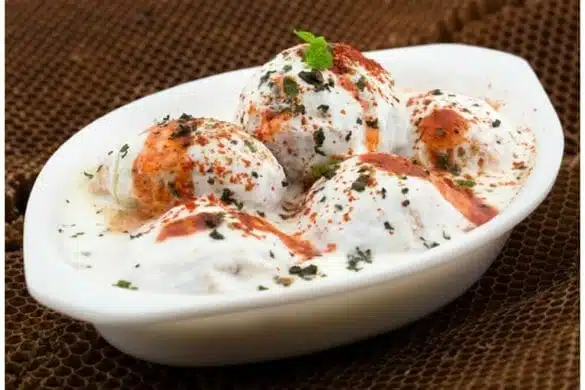
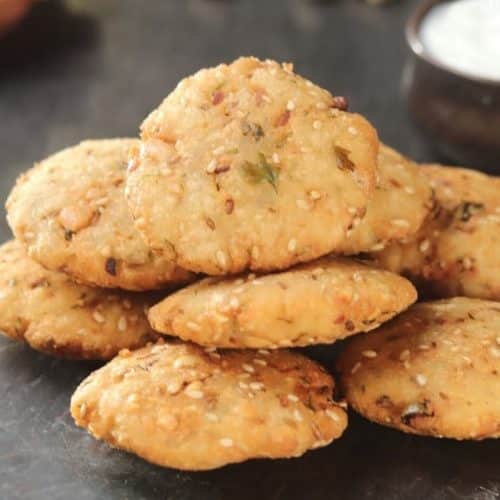
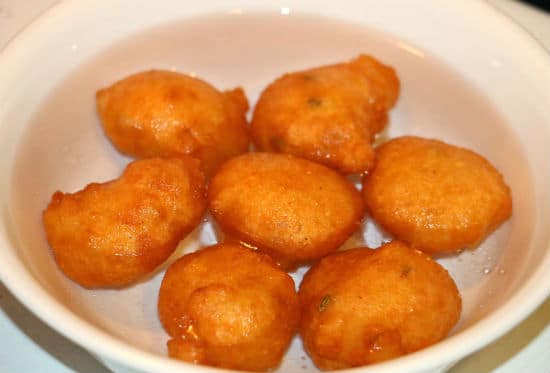
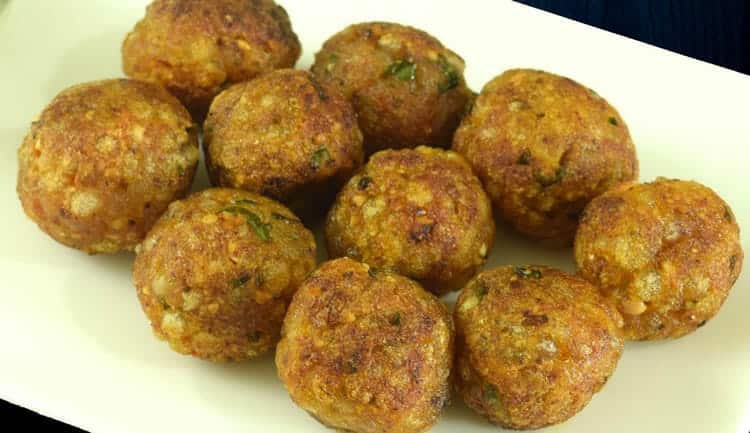

1 comment
good